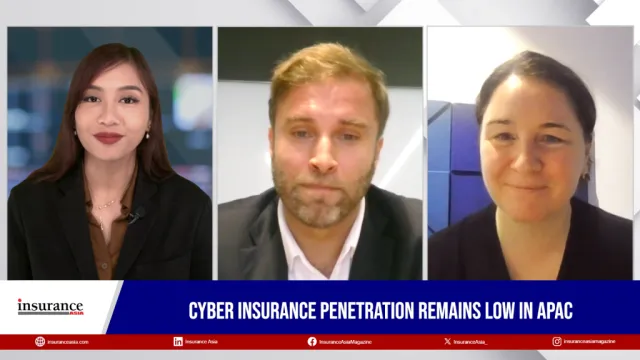
Chinese insurers deem it wise to move to alternative investments
Analysts see new regulations driving a conservative shift as insurers seek stability amidst volatile markets.
Investments by Chinese insurers could face peak pressures amidst dwindling interest rates and the heightened volatility prevailing in domestic stock markets. Still, analysts are optimistic about the stability and readiness of providers on Red Dragon soil.
Trung Tran, insurance analyst for CreditSights, provides a nuanced perspective on the significant impact of declining interest rates on insurers, whose substantial bond portfolios are predominantly anchored in the domestic market. With the trajectory of Chinese interest rates pointing downwards, Tran warns of potential repercussions on insurers’ future earnings, highlighting the adverse effects on investment income.
“The performance of equity investments is also a concern, as evidenced by the decline in the CSI index last year. This decline was indicative of wider market weakness, exacerbated by ongoing concerns about the property sector and wider economic challenges. As a result, insurers’ investment results have been less than favourable over the past year,” Tran told Insurance Asia magazine.
Despite these challenges, Fitch Ratings reported that insurers have adopted a more conservative stance due to new regulations enacted since 2022, compelling them to embrace more cautious investment strategies.
Throughout the initial nine months of 2023, the investment yields of several major listed Chinese insurers remained below their three-year averages, albeit displaying marginal improvement compared to the corresponding period in 2022.
The collective annual rate of return on investments (ROI) for all Chinese insurers saw a decline to 2.23% from 2022, a reflection of the demanding investment landscape compounded by persistently low interest rates.
Reports have shed light on insurers’ property investments amidst the backdrop of distress amongst Chinese developers.
Fitch, however, foresees limited losses for rated issuers, citing the diversification and prudence evident in their property exposures. Whilst some life insurers have allocated portions of their assets to the property sector, including non-standard assets like trust plans, their direct exposure to commercial property remains relatively modest, typically constituting a mid-single-digit percentage of total invested assets.
Whilst traditional options like long-term bonds persist, Tran similarly notes a growing inclination towards real estate investments for diversification and stable income streams. Yet, upheavals in the real estate sector have called upon uncertainty, although they have not caused significant capital impacts so far.
Contrary to this, Ai Tong, corporate and insurance partner at Norton Rose Fulbright (NRF), observed a trend towards divestment from real estate and bank stocks in favour of technology and pharmaceutical sectors, which is indicative of a strategic realignment in response to regulatory imperatives.
Crossed with C-ROSS?
The implementation of the China Risk-Oriented Solvency System (C-ROSS) Phase 2 since the first quarter of 2022 has bolstered insurers’ cautious investment approach, particularly concerning long-term equity investments in property-related assets.
This is attributed to heightened capital charges and enhanced recognition of acquisition costs of investment properties, which impact insurers’ core Tier 1 capital.
“From a risk management perspective, C-ROSS Phase 2 in China has created a ‘top-level risk control’ mechanism,” Tong told Insurance Asia.
“For example, Phase 2’s comprehensive risk rating is no longer limited to traditional compliance-based risks. Instead, the types of risks now include a large number of business operational and strategic development-related indicators, so that the risks are intertwined with company strategy and business operations,” she explained.
Central to Phase 2 is a recalibration of risk measurement standards, particularly concerning insurers’ long-term equity investments. Tong highlighted the imposition of stringent capital deductions for such investments, emphasising the imperative for insurers to prioritise their core businesses and mitigate the risks of capital expansion.
Moreover, Phase 2 incentivises alignment with national priorities, offering discounts on minimum capital requirements for investments supporting initiatives such as carbon neutrality and technological self-reliance.
Mirroring this perspective, CreditSights’ Tran acknowledged the positive strides in encouraging insurers to realign their portfolios towards safer assets. However, amidst a low-interest-rate backdrop, insurers could turn to alternative investments.
“On the regulatory front, the adoption of C-ROSS II a few years ago has strengthened investment practices, increased transparency and encouraged insurers to rebalance their portfolios towards safer assets,” said Tran. “However, in a low-interest rate environment, insurers are challenged to balance these constraints with the need for higher returns and may consider alternative investments with higher returns but also higher risk.”
Outlook
Looking ahead, Tong anticipates a confluence of factors driving insurers towards more conservative investment approaches.
“It is expected that the regulatory requirements for full penetration will prompt insurance funds to further reduce investments in non-standard assets, lower the tendency to choose low-liquidity, high-capital-occupying assets such as long-term equity investments and investment properties,” she said.
“This will increase to a certain extent the proportion of capital-friendly assets (such as long-term fixed-income assets) and policy-preferred assets (such as green bonds), while the diversification of assets to avoid over-concentration of investments will also be considered during the investments made by insurance funds,” the NRF partner added.
Separately, CreditSights’ Tran stressed the ramifications of policy rate caps on product attractiveness, potentially denting sales figures. Regardless, China’s burgeoning insurance market, fueled by its low insurance penetration, continues to beckon.
“Insurance products continue to offer better returns than bank deposits, suggesting that growth, albeit moderated, will continue,” Tran projected. “The Chinese government is taking steps to improve product design, coverage, fees and transparency for policyholders, which may improve business conduct in the sector. Nevertheless, the near-term outlook appears cautious, with macroeconomic trends such as the real estate industry pointing to continued weakness in the medium term.”



















 Advertise
Advertise






